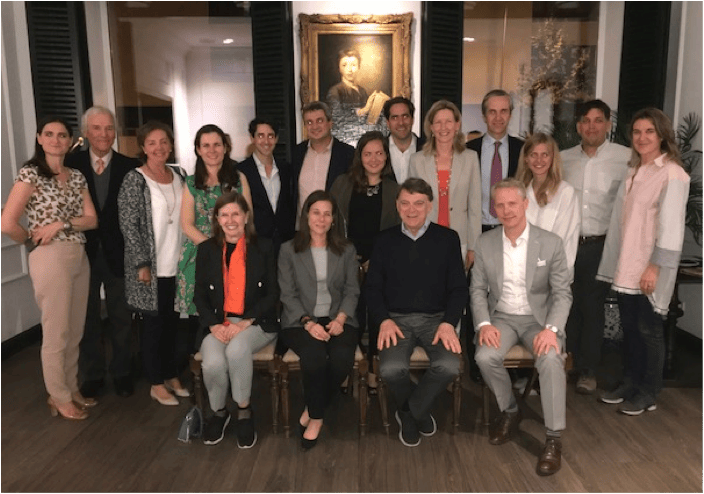
Photo: Getty Images
Imagine the year 2028. What do you envision the share of rented versus bought clothes to be in Spain? And how about the shares of online sales, digital payments, and Amazon’s apparel business?
This is how professor Tom Robertson, Wharton’s former dean and current academic director of the Baker Retailing Center, kicked off our “New Frontiers of Retail and Consumer Behavior Research” conference in Madrid in May, challenging an audience of about 250 industry and academic participants to consider future retail developments. Featuring three Wharton faculty speakers and Spanish faculty moderators, this conference was part of the new collaboration between Baker and Penn’s Lauder Institute with Spain’s Ramón Areces Foundation. The foundation, established by the founder of Spanish department store El Corte Inglés, also has partnerships with MIT, the London School of Economics, and the Nobel organization.
Professor Robertson also shared his insights on pop-up stores, describing them as part of an omnichannel strategy focused on enhancing brands by creating buzz through social media, and not necessarily as an initiative with sales goals. Pop-ups are specifically designed to be ephemeral—transitory, like fashion—and their success is precisely based on the novelty effect.
Marketing professor Barbara Kahn, the previous director of the Baker Retailing Center, shared content from her new book, The Shopping Revolution. She presented the “Kahn Retailing Success Matrix” to analyze and map retailers’ positioning on two dimensions: retail proposition (product benefits or customer experience) and superior competitive advantage (increase pleasure or eliminate pain points). Her analysis of the developments in retail showed how various historically successful retailers and brands, such as Macy’s and Gap, have been challenged by newer types of retailers and retail formats. She explained Amazon’s success with its relentless customer focus, positioning of convenience and low price, and emphasis on collecting and leveraging data. For more on Kahn’s success matrix and the four best retail business strategies, read this excerpt from her book in Wharton Magazine.

Leadership of the Ramón Areces Foundation, including Baker Retailing Center and Foundation board member Jorge Pont (El Corte Inglés; 4th from left) and Raimundo Pérez-Hernández, director of the Foundation (far left) with faculty speakers and organizers from Wharton and Spanish universities. (Photo: Alejandro Amador)
Legal Studies and Business Ethics professor Diana Robertson described neuromarketing measurement techniques as a way to gauge consumers’ responses, including emotions such as pleasure, desire, and even confusion, to all kinds of stimuli in retail settings—from store shelves to product packaging to commercials to websites. Key methods for industry applications are eye tracking, measuring electrical energy in the brain through scalp-attached electrodes (EEG), and fMRI brain scans. They capture physical responses to stimuli and tend to be more accurate than surveys or focus groups since most of our actions happen subconsciously and people often don’t know the answer or want to give a socially acceptable one. These techniques can thus complement traditional measurement methods.
In Madrid, we also met with alumni for an evening of conversation about retail topics and beyond, spearheaded by leaders of the Wharton Club of Spain, including Paula Almansa, Beltrán Álvarez de Estrada, Alberto Lisnier, and Patricia Enriquez. In addition to the above faculty, marketing professor Keith Niedermeier, who was in Spain leading a Baker Retailing Center-supported undergrad retail course, joined the dinner.

Back row, left to right: Patricia Enriquez WEV07, Pedro Palma Carrillo WG71 GR76, Maria Martinez Verdu WAM05, Paula Almansa WG01, Agustin Gomez de Segura W12, Enrique Peña WG07, Alyssa Meyer, Juan Urdaneta WG02, Denise Dahlhoff LPS08 LPS10, Beltran Alvarez de Estrada W96, Silke Lampka W11, Alexander Mandl G01 WG01, and Maria Teresa Aranzabal WG89. Front row: Wharton professors Diana Robertson, Barbara Kahn, Tom Robertson, and Keith Niedermeier. (Photo: Denise Dahlhoff)
We covered a range of topics such as the fast fashion model, including differences between Zara and H&M; how voice assistants may influence our future lives, shopping included, and raise new privacy and ethics questions; and online shopping, including the double challenge of last-mile delivery, which shoppers expect for free when it’s increasingly costly operationally. Like in many countries, Amazon is the leading online retailer in Spain, and the shopping experience it offers has set the bar high for other retailers’ online operations, including those of El Corte Inglés, which has the third-largest online sales in Spain, after Amazon and AliExpress.
Although online and multi-channel shopping are firmly established in Spain, physical stores are still very important, like elsewhere. Certainly, Spain’s many global fashion brands such as Zara, Mango, Loewe, and Desigual are fixtures of the physical landscape, but so is ubiquitous department store El Corte Inglés, which operates 17 stores in the Madrid area alone. It’s a key channel in Spain for international brands and carries a wider range of products and services than department stores in other countries. It offers not only fashion, beauty, toys, electronics, groceries, and in-store dining, but also travel, ticket, and insurance services—businesses that not even Amazon is in (at least not yet).
Author’s note: Spain’s leading fashion business publication Modaes.es also wrote about the conference. The partnership, initiated by Jorge Pont, an El Corte Inglés C-level executive and board member of both the Baker Retailing Center and Ramón Areces Foundation, also incorporates recent talks on new technological trends in global consumer markets by Wharton professor and Lauder Institute director Mauro Guillen.

























